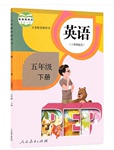题目内容
Ⅰ 语言知识及应用(共两节,满分45分)
第一节完形填空(共15小题;每小题2分.满分30分)
阅读下面短文,掌握其大意.然后从1—15各题所给的A、B、C和D项中,选出最佳选项,并在答题卡上将该项涂黑。
As the plane circled over the airport, everyone guessed that 1 was wrong .The plane was moving unsteadily(不稳定地)through the 2 , and the passengers were suddenly thrown forward. At that moment ,the air hostess(空中小姐) appeared. She looked very pale, but was quite 3 . Speaking quickly but almost in a whisper she told everyone that the pilot was badly ill and asked if any of the passengers knew anything about machines or at 4 knew how to drive a car. After a moment’s 5 , a man got up and followed the hostess into the pilot’s room. 6 the pilot aside, the man took his seat and listened carefully to the orders 7 were being sent by radio from the airport 8 . The plane was now dangerously 9 to the ground, but it soon began to 10 .
The man had to circle the airport several times in order to become familiar with the controls. But the danger had not yet passed. The terrible moment came when he had to 11 . Following orders, the man controlled the plane towards the airfield. It shook greatly 12 it touched the ground and then moved rapidly 13 the field, but after a long 14 it stopped safely. Outside, a lot of people, who had been watching anxiously, ran forward to 15 the “pilot ”on an excellent landing .
1. A. nothing B. what C. something D. the plane
2. A. airport B. heaven C. air D. cloud
3. A. natural B. calm C. worried D. excited
4. A. most B. last C. first D. least
5. A. thought B. quiet C. darkness D. hesitation
6. A. Moved B. Sending C. Moving D. Being put
7. A. they B. that C. these D. this
8. A. down B. below C. there D. nearby
9. A. up B. over C. close D. downstairs
10. A. fly B. go down C. stop D. climb
11. A. land B. drive C. rise D. set
12. A. as B. before C. after D. until
13. A. above B. onto C. around D. across
14. A. fly B. forward C. run D. drive
15. A. congratulate B. praise C. thank D. reward
1~5. CCBDD 6~10.CBBCD 11~15.AADCA
解析

 期末集结号系列答案
期末集结号系列答案第二部分语言知识及应用(共两节, 满分35分)
第一节:完形填空(共10小题,每小题2分,满分20分)
阅读下面短文,掌握其大意,然后从21—30各题所给的四个选项(A、B、C和D)中,选出最佳选项,并在答题卡上将该项涂黑。
Secondhand smoke clearly kills people and the only way to control it is to ban smoking in all workplaces, US Surgeon-General Dr Richard Carmona said.
In 1964Surgeon General’s report first laid out the 21 of smoking. Years later, in another report Dr Richard Carmona 22 the effects of secondhand smoke and said no one should be forced to inhale it.
“Secondhand smoke causes early death and disease in children and in 23 who do not smoke,” the report reads. “Children 24 to secondhand smoke are at an increased risk for sudden infant death syndrome(综合症), acute respiratory(呼吸道) infections, and ear problems,” it adds.
Smoking by 25 causes respiratory symptoms and slows lung growth in their children. A 2005 report from the US Centers for Disease Control and Prevention found that 430 26 died every year in the United States from sudden infant death syndrome-all 27 by secondhand smoke.
States, 28 and other local authorities have battled over instituting(制定)smoking bans. Some 29 , especially bars and restaurants, have said they will lose business if smoking is completely banned. But the report said it is impossible to protect non-smokers even with designated smoking areas, and at least one report from California, which has strict bans, has shown no 30 on businesses.
21.A.advantages B.dangers C.poisons D.elements
|
22.A.neglected B.gained C.detailed D.conquered
23.A.gentlemen B.mothers C.youngstersD.adults
24.A.exposed B.resisted C.reported D.invited
25.A.audiences B.authorities C.patients D.parents
26.A.teenagers B.elders C.mothers D.newborns
27.A.obtained B.created C.caused D.abandoned
28.A.countries B.cities C.schools D.businesses
29.A.stores B.headquarters C.businesses D.factories
30.A.comment B.impact C.attack D.affect